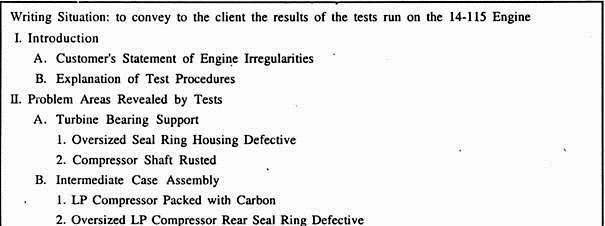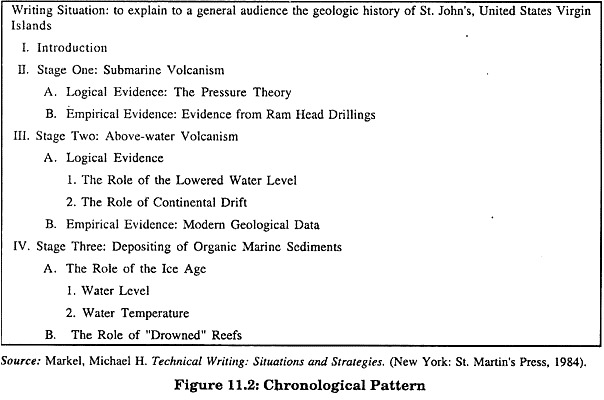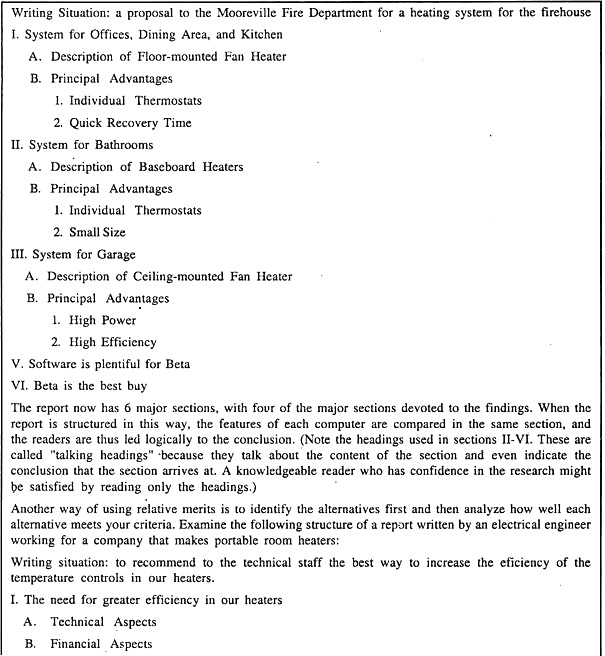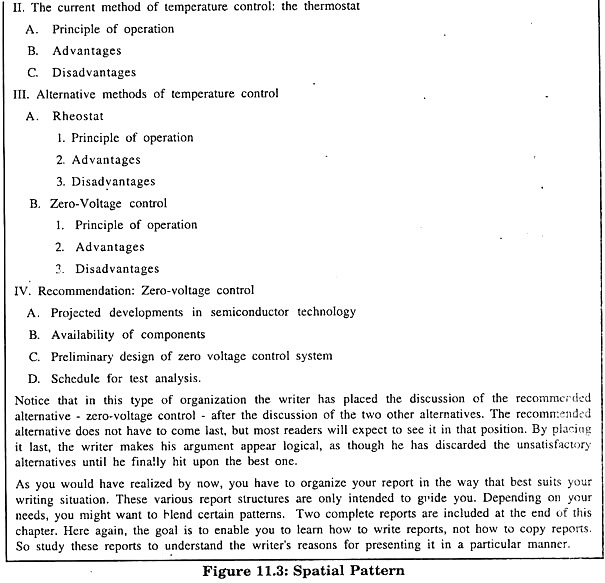After reading this article you will learn about Structuring and Concluding the Report.
Structuring the Report:
After the investigation is over, or while it is underway, you have to start structuring your report. Since reports can be structured in a number of different ways, you should identify the most suitable structure on the basis of the “purpose” of your study. This is important because informational assignments are structured differently from analytical ones.
Many assignments require both information and analysis, so it is up to you to determine the overall purpose of your study. Is your general goal to provide background information that someone else will use and interpret? Then an informational outline is suitable, overall; but subsections of the study may require some analysis to discover (and emphasize) important facts.
ADVERTISEMENTS:
Is the purpose of your study to scrutinize the data and draw your own conclusions and make recommendations? Then use an analytical outline for the report, even though your opinions will be based on facts. For problem solving you may use a variety of structural schemes, as long as you avoid errors in logical reasoning.
Informational Assignments:
Studies that lead to factual reports, offering little scope for analysis or interpretation of data, are generally structured on the basis of subtopics dealing with specific subjects.
These subtopics can be arranged in various ways:
ADVERTISEMENTS:
i. According to importance
ii. According to sequence
iii. According to chronology
iv. According to spatial orientation
ADVERTISEMENTS:
v. According to category
These structures are not watertight compartments: a topic organized by category can also be structured by chronology within a larger category. Choose the approach that conveys your subject most clearly, logically and forcefully (but not rudely) to the readers. Take a look at the outlines in Figure 11.1, Figure 11.2 and Figure 11.3. Studying them will give you ideas for structuring your own report.
Analytical Assignments:
Analytical studies usually contain analyses, conclusions, and recommendations. These studies generally follow a problem-solving method. The two most common-structural methods are 1. Hypothesis and 2. Relative merit.
Hypothesis:
When the report’s purpose is to discover causes, predict results, or suggest a solution to a problem, one way to proceed is to formulate hypothetical explanations. If your problem is to determine why your company is having trouble hiring secretaries, you’d begin analyzing this problem by speculating on the reasons.
Then after researching the issue, you would organize your report so that you could prove or disprove each reason. You might structure your report like this:
Problem:
ADVERTISEMENTS:
Why are we having trouble hiring new secretaries?
I. Salaries are too low.
A. What do we pay our secretaries?
B. What do comparable companies pay their secretaries?
ADVERTISEMENTS:
C. How important is pay in influencing secretaries’ job choices?
II. Our location is poor.
A. Are we accessible by public transportation and major roads?
B. Is the area physically attractive?
ADVERTISEMENTS:
C. Are housing costs affordable?
D. Is crime a problem?
III. The supply of secretaries is diminishing.
A. How many secretaries were available five years ago as opposed to now?
B. What was the demand for secretaries five years ago as opposed to now?
Relative Merit:
ADVERTISEMENTS:
When the assignment involves evaluating how well various alternatives meet your criteria, the natural way to structure your analysis is by focusing on the criteria.
You have to choose from three alternative models, Alpha, Beta, and Gamma. If you organize your report so that you tell the reader everything about the Alpha, then everything about the Beta, and then everything about the Gamma, the reader may have trouble making comparisons.
Your report structure might look like this:
I. Introduction
A. The problem
B. The method used
ADVERTISEMENTS:
II. Alpha
III. Beta
IV. Gamma
V. Conclusion
In this kind of structure, the conclusion is easy to read because it has been, rightly, given a separate section. But it is hard for the readers to make comparisons between the three computers. If the readers wanted to know the differences in the storage capacities of the three models, they would have to go through the trouble of locating that information in section II, III, and IV.
This type of subject would have been presented more clearly and persuasively if it had been organized according to the criteria used for selecting the best computer. If you selected your computer based on cost, storage, service warranties and availability of software programs, these criteria (rather than the computers themselves) might serve as a means for dividing the report into different sections.
ADVERTISEMENTS:
Your report would then be structured in the following way:
I. Introduction
A. The problem
B. The method used
II. Cost favors alpha
III. Storage capacity points to Beta
ADVERTISEMENTS:
IV. Service warranties of Alpha, Beta, and Gamma are equal.
One final word of advice regarding the structuring of reports. Structuring can take place simultaneously with the research, or before investigation has commenced, or after the investigation is over. It can also take place during all the three stages mentioned above, constantly being fine-tuned as new information is unearthed.
Even after you start writing the report according to the structure you have planned, you may find you need to conduct more investigation to fill in the gaps you discovered while filling out the structure. Until the very last minute, the structure is often in flux.
This doesn’t mean that you shouldn’t follow any game plan for writing the report. What it means is that you should have a plan to enable you to get started on your project, but you should also allow the plan to grow and change to suit the needs of your study.
Concluding the Report:
Let us assume that you have finally settled on a suitable organizational structure. At the end of the report you will have to make conclusions and/or recommendations on the basis of the evidence you have amassed over the course of your investigation. So when you start your investigation of the problem also consider the way you plan to end your report.
ADVERTISEMENTS:
A “conclusion” is a logical interpretation of what the facts in your report mean. This interpretation cannot be based on never-before mentioned information. Whatever conclusions you draw, they must be derived from the facts and information included in your report.
“Recommendations” are inappropriate in a report when you are not expected to supply them, so you must know the difference between “conclusions” and “recommendations”. A “conclusion” is an interpretation of what the facts mean; a “recommendation” suggests what ought to be done about the facts.
The following is an example of the difference:
Conclusion:
“I conclude that on the basis of its track record and current price, this company is an attractive buy”.
Recommendation:
“I recommend that we write a letter to the president offering to buy the company at a 10 percent premium over the market value of its stock.” When you have been asked to translate your conclusions into recommendations, make sure that the relationship between them is clear.
Keep in mind that your recommendations must be based on logical analysis and sound conclusions. And make sure that your recommendations are detailed clearly so that your readers know exactly what to do with them.
To sum up, report writing involves identifying the problem and purpose, investigating the issue, structuring the material, and ending with conclusions and/or specific recommendations. And at all times, show consideration for the audience. As a regional managing partner at Arthur Anderson and Company says, “the proposal must be clearly written: very easy to read, free of jargon and buzz words, and to the point!”




